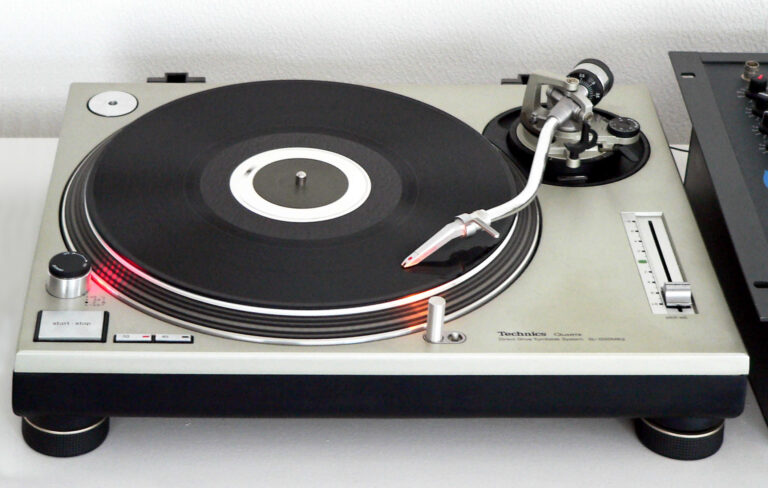
Music is more than just sound—it’s a reflection of human culture, technology, and creativity. Over the past century, the way we create, consume, and experience music has transformed dramatically. From the tactile grooves of vinyl records to the digital convenience of streaming platforms, the evolution of music reveals how technology has reshaped our relationship with sound.
The music history journey is not just about the rise of new formats—it’s about how each technological shift influences culture, accessibility, and the very art of music itself. This article explores the remarkable journey of music, from analog beginnings to the digital music revolution, highlighting the innovations and societal changes that have defined the music technology evolution.

The Analog Era: The Birth of Recorded Music
The story of music technology begins in the late 19th century with the invention of the phonograph by Thomas Edison in 1877. This breakthrough allowed sound to be recorded and played back, transforming music from a live experience to something people could enjoy repeatedly in their homes.

1. Phonographs and Cylinders
Edison’s phonograph used wax cylinders to capture sound vibrations. While the audio quality was primitive by today’s standards, it marked the beginning of recorded music as a tangible commodity.

2. The Rise of Vinyl Records
By the early 20th century, vinyl records replaced cylinders, offering improved sound fidelity and durability. The iconic 78 RPM records evolved into 33⅓ RPM LPs and 45 RPM singles, creating new ways to enjoy and distribute music.
Vinyl’s tactile experience—the act of holding a record, placing it on a turntable, and dropping the needle—made listening a ritual, not just background noise.

3. Cultural Impact of Vinyl
Vinyl records didn’t just change how people listened—they shaped music culture. Album art became a canvas for expression, DJs emerged as new musical innovators, and record collecting became a passionate hobby.
The vinyl era laid the foundation for the music history that would follow, emphasizing the physical, emotional, and communal aspects of music.
The Magnetic Tape Revolution
The 1940s and 1950s brought magnetic tape technology, which further transformed the evolution of music. Reel-to-reel tapes and later cassette tapes enabled higher fidelity recordings and easier editing. Musicians could now overdub, remix, and experiment like never before.
1. Cassette Tapes and Portability
Compact cassettes made music portable for the first time. Boomboxes and car stereos turned music into a personal, mobile experience. The portability of cassettes helped expand musical influence across generations and geographies, democratizing access to music.
2. DIY and Mixtape Culture
Cassettes also gave rise to the mixtape phenomenon. Music lovers could curate personal playlists and share them with friends, sowing the seeds of today’s playlist culture. This era demonstrated that the music technology evolution was not just about sound quality—it was about participation, creativity, and personal expression.
The Digital Music Revolution: CDs and Early Digital Formats
The 1980s marked the beginning of the digital music revolution with the introduction of the Compact Disc (CD). CDs offered crystal-clear sound quality, durability, and longer playtime than vinyl or cassette tapes.
1. Impact on Music Consumption
CDs made albums more portable, resilient, and accessible, accelerating the mass distribution of music worldwide. The convenience and clarity of CDs helped propel genres like pop, rock, and electronic music to global audiences.
2. Early Digital Formats
In the 1990s, digital audio formats such as MP3s emerged. These formats revolutionized music storage and sharing, compressing files without significant loss of quality. The rise of MP3s made it easier to distribute music online, laying the groundwork for the future digital music revolution.
3. Shifts in Music Industry Economics
Digital formats disrupted traditional revenue models. Record labels initially resisted digital distribution, but platforms like Napster and peer-to-peer file sharing forced the industry to rethink monetization.
This period highlighted the interplay between technology and music culture, showing that innovation could empower listeners as much as musicians.
The Rise of Streaming: Music at Your Fingertips
The 21st century brought the most significant transformation in the evolution of music: streaming. Platforms like Spotify, Apple Music, and YouTube have redefined how music is accessed, making virtually any song available instantly on-demand.
1. From Ownership to Access
Streaming changed the paradigm from owning music to accessing it. Consumers no longer needed to buy vinyl, cassettes, or CDs—they could subscribe and stream millions of songs anytime. This shift has transformed the economics of the industry, with subscription models replacing physical sales as the primary revenue source.
2. Personalized Listening Experiences
Streaming platforms introduced algorithms that curate playlists based on listening habits. Features like “Discover Weekly” and genre-specific playlists offer personalized experiences that were impossible in the vinyl or CD era. This personalization underscores the intersection of technology, data, and culture in the music technology evolution.
3. Global Connectivity
Streaming has also made music a global language. Artists from anywhere can reach worldwide audiences, creating unprecedented cultural exchange. Genres like K-pop, Afrobeat, and Latin trap have gained massive international followings, reflecting how technology shapes music’s cultural impact.
The Influence of Music Technology on Creativity
The evolution of music is as much about creativity as it is about formats. Each technological leap has expanded artistic possibilities.
1. Analog Synthesizers and Drum Machines
In the late 20th century, analog synthesizers and drum machines enabled musicians to create entirely new sounds. Electronic, hip-hop, and pop genres flourished thanks to these innovations. Technology became a tool not just for playback but for creation.
2. Digital Audio Workstations (DAWs)
Software like Pro Tools, Ableton Live, and FL Studio revolutionized the creative process. Musicians can now compose, edit, and produce professional-quality tracks entirely on a computer. This democratization of music production has contributed to an explosion of independent artists, shifting the music industry’s landscape.
3. AI and Music Composition
Today, AI tools can compose, remix, and even master music. While controversial, these tools represent the cutting edge of the music technology evolution, offering new ways to explore creativity and experiment with sound.
Vinyl Revival in the Digital Age
Despite the convenience of streaming, vinyl has experienced a remarkable comeback. Collectors, audiophiles, and new generations are embracing vinyl for its tangible and auditory appeal.
1. Nostalgia and Tangibility
The tactile experience of handling records, the visual artistry of album covers, and the warm analog sound evoke nostalgia and emotional connection. Vinyl listening is slower, intentional, and immersive—qualities absent in the fast, digital world of streaming.
2. Market Resurgence
Vinyl sales have been growing year after year, proving that physical formats still hold cultural and economic value. The vinyl revival demonstrates that the evolution of music is not linear; old and new technologies coexist, each offering unique experiences.
The Impact of Music Technology on Society
The music history journey from vinyl to streaming highlights broader social and cultural changes. Music technology influences not just how we listen, but how we interact, create, and connect.
1. Accessibility and Inclusivity
Streaming has broken down barriers, giving listeners access to diverse genres and artists. Music is no longer confined by geography, social class, or economic limitations.
2. Community and Culture
Technology fosters communities around music. Fans connect through online platforms, share playlists, and attend virtual concerts. Music has become both a personal and collective experience, illustrating how the digital music revolution reshapes culture.
3. Challenges and Controversies
The shift to digital also brings challenges—artist compensation, copyright issues, and algorithmic control of taste. These debates highlight the complex relationship between technology and music in modern society.
The Future of Music Technology
The story of the evolution of music is far from over. Emerging technologies promise to reshape the landscape yet again.
1. Virtual Reality and Immersive Experiences
VR concerts and 3D audio offer immersive experiences that mimic live performances. Fans can attend concerts virtually, creating new ways to engage with music.
2. Blockchain and NFTs
Blockchain technology and NFTs offer new models for ownership and revenue. Artists can sell unique digital assets, while fans can collect and trade music in ways previously unimaginable.
3. AI-Powered Personalization
AI continues to refine music recommendations, composition, and production. Personalized soundscapes may become the norm, blurring the line between human and machine creativity.
4. Sustainable Music Practices
As the world becomes more eco-conscious, digital formats and eco-friendly vinyl production reflect a commitment to sustainability, shaping the future music technology evolution responsibly.
Conclusion: A Symphony of Innovation and Emotion
The journey from vinyl to streaming tells the story of human innovation, creativity, and cultural evolution. Each technological leap—phonographs, vinyl, cassettes, CDs, MP3s, and streaming platforms—has reshaped how we experience music, influencing both artistic expression and societal trends.
While the digital music revolution has made music more accessible than ever, the resurgence of vinyl reminds us that emotional connection, tangibility, and nostalgia remain essential to the listening experience. The evolution of music reflects not just technological progress, but the enduring power of music to connect, inspire, and move humanity.
As we look to the future, the integration of AI, VR, and blockchain promises exciting possibilities, ensuring that the story of music technology continues to evolve, delight, and resonate with generations to come.





